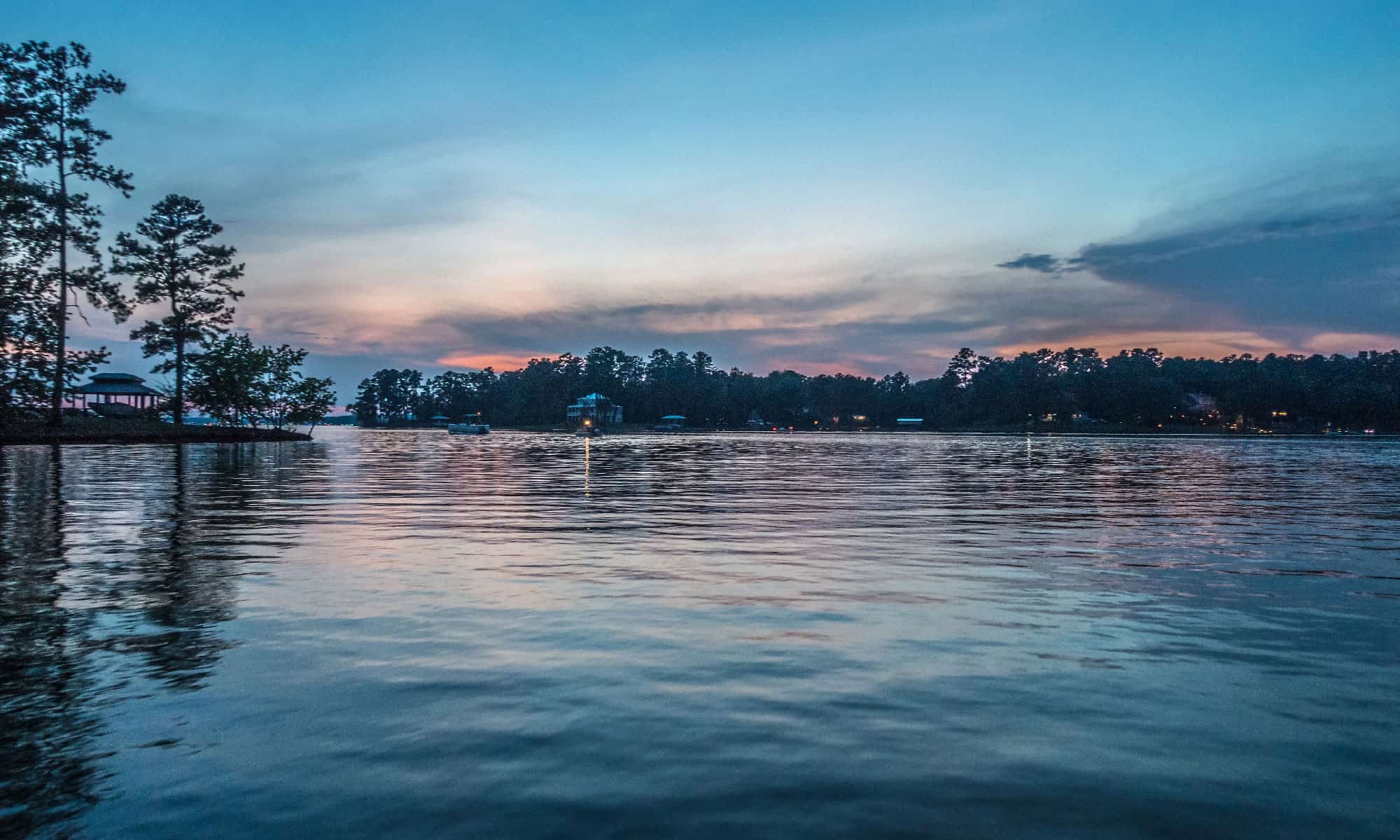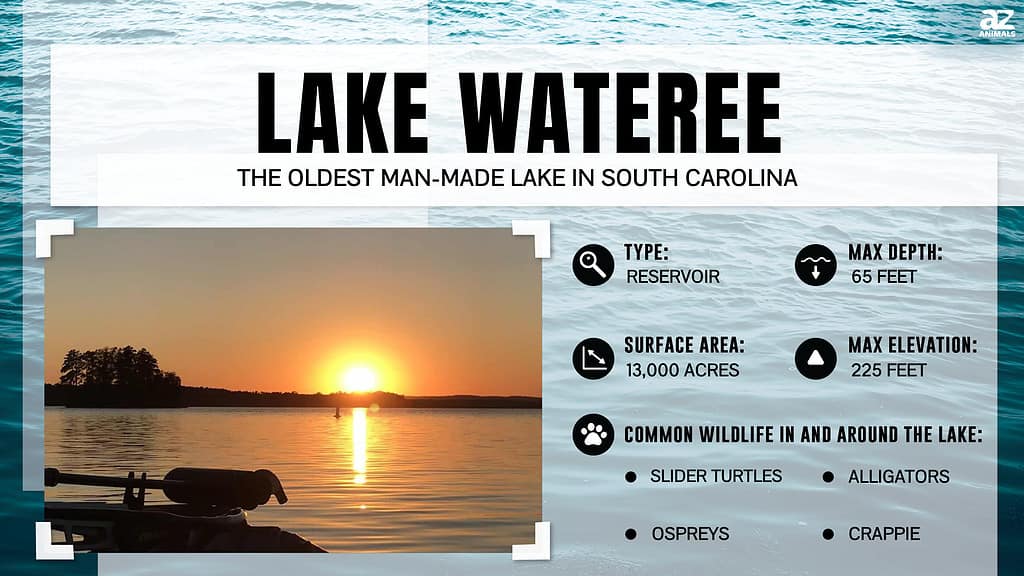
When hydroelectricity was created in the nineteenth century, man-made lakes became popular over the next century as a means of harnessing the water needed to produce power. Since South Carolina was well populated by the twentieth century, the power demand of the state continued to increase. When did the state build its first reservoir? Let’s discover the oldest man-made lake in South Carolina.
What is a Man-Made Lake?
A lake becomes a man-made lake when it is artificially created by humans. Man-made lakes are also called reservoirs, and reservoirs are created by dams that impede the flow of water in rivers.
This impediment creates a lake behind the dam. Most dams exist as a means of generating hydroelectric power, though some exist solely as flood control.

Lake Wateree bears the name of an extinct indigenous tribe called the Wateree.
©Matthew goheen/Shutterstock.com
What is the Oldest Man-Made Lake in South Carolina?
The oldest man-made lake in South Carolina is Lake Wateree. Lake Wateree was created in 1919 on the Wateree River. James Buchanon Duke pushed for the creation of the Wateree Hydro Station near the City of Camden.
The surface acreage of the lake exceeds 13,000, and there are about 242 miles of shoreline if you include the shores on islands. It’s a shallow lake with gradual sloping shores, and it is usually no deeper than 65 feet at its deepest point.
While Lake Wylie is older than Lake Wateree, it is not entirely contained within South Carolina. Because it shares its shores with North Carolina, in this article, it is dethroned as the oldest man-made lake.
Lake Wateree bears the name of an extinct indigenous tribe called the Wateree. War with invading Europeans forced these natives to merge with the Catawba which also called South Carolina home. Today, the Catawba Indian Nation has a reservation about an hour north of Lake Wateree.
Where is Lake Wateree in South Carolina?
Lake Wateree occupies a section of Lancaster, Kershaw, and Fairfield counties in South Carolina. It is in the northern center of the state on the Wateree River. It’s a little more than an hour south of Charlotte, North Carolina, and about an hour northeast of Columbia, South Carolina.
The Wateree River that flows into Lake Wateree is also called the Catawba River farther north. The Catawba River begins along the Blue Ridge in North Carolina and flows south into South Carolina. As the river flows from Lancaster County to Kershaw County, the name changes to the Wateree River.

The oldest man-made lake in South Carolina is Lake Wateree. Lake Wateree was created in 1919 on the Wateree River.
©David Jeffcoat/Shutterstock.com
Oldest Man-Made Lake: Recreational Activities on Lake Wateree
Today, Lake Wateree in South Carolina is a popular destination for recreational activities. There are boat ramps open to the public, and there is also the Lake Wateree State Park. This makes the water easy to access.
The state park is open all year and offers swimming, camping, boating, and hiking options. One of the easy hiking trails is named the Desportes Island Nature Trail. It’s a 2.3-mile flat hike that takes a little more than a half hour to complete at a brisk pace.
Lake Wateree State Park also offers year-round kayak rentals. For 40 dollars, a kayak with paddles and a lifejacket can be rented for a full day. Half-day rentals are 25 dollars. There is also a playground near the Park Store for the amusement of smaller children.
Wildlife You’ll See at Lake Wateree
There is plenty of wildlife at Lake Wateree, however, there is less than would be present at a natural lake. The biodiversity in reservoirs is lower than in natural lakes because most reservoirs lack a littoral zone. The littoral zone of a waterway refers to the marshy areas covered in plant life along the shores where land meets water.
These transition zones do not develop in man-made lakes because the rising and falling of water levels prevent this ecosystem from taking hold. As a result, the plants and animals that rely on littoral zones do not exist.
Despite this, wildlife flourishes around the shores of Lake Wateree for visitors to experience. These animals include:
- White-Tailed Deer
- Foxes
- Ospreys
- Herons
- Egrets
- Slider Turtles
- Doves
- Quails
- Turkeys
- Hawks
- Bald Eagles
A bird sanctuary exists along 6 miles of the shoreline in Lancaster County. It’s right across the water from Lake Wateree State Park, and this strip of land was spared from residential development. While it isn’t under active conservation yet, the area is protected so that wild birds can flourish unhindered.
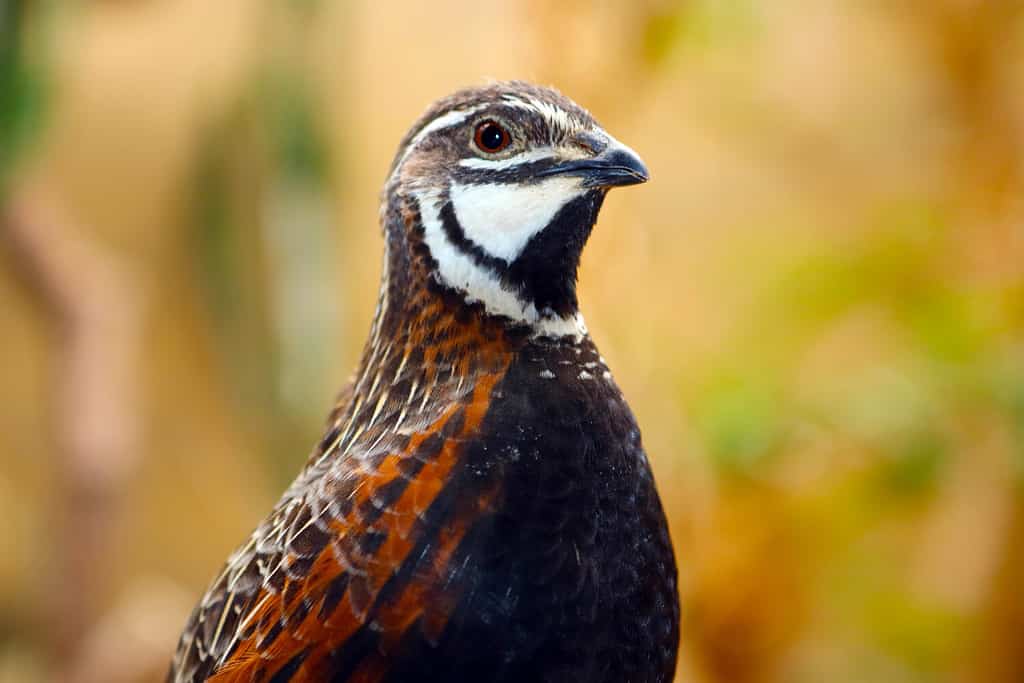
A bird sanctuary exists along 6 miles of the shoreline in Lancaster County. It’s right across the water from Lake Wateree State Park.
©markusmayer/Shutterstock.com
Fishing Along Lake Wateree in South Carolina
Fishing is popular around the lake as there are no spots on the lake closed to fishermen. Before fishing at Lake Wateree, make sure you have the required fishing license issued by the State of South Carolina.
These are some of the fish that are caught in Lake Wateree in South Carolina:
- Crappie
- Channel Catfish
- Arkansas Blue Catfish
- White Perch
- Sun Perch
- Large Mouth Bass
- Striped Bass
- White Bass
- Bream
- Crayfish
If you can’t afford the supplies needed to partake in fishing, there is a Fishing Tackle Loaner Program at Lake Wateree State Park. This program offers free loans on fishing gear like tackle boxes, rods, and reels.
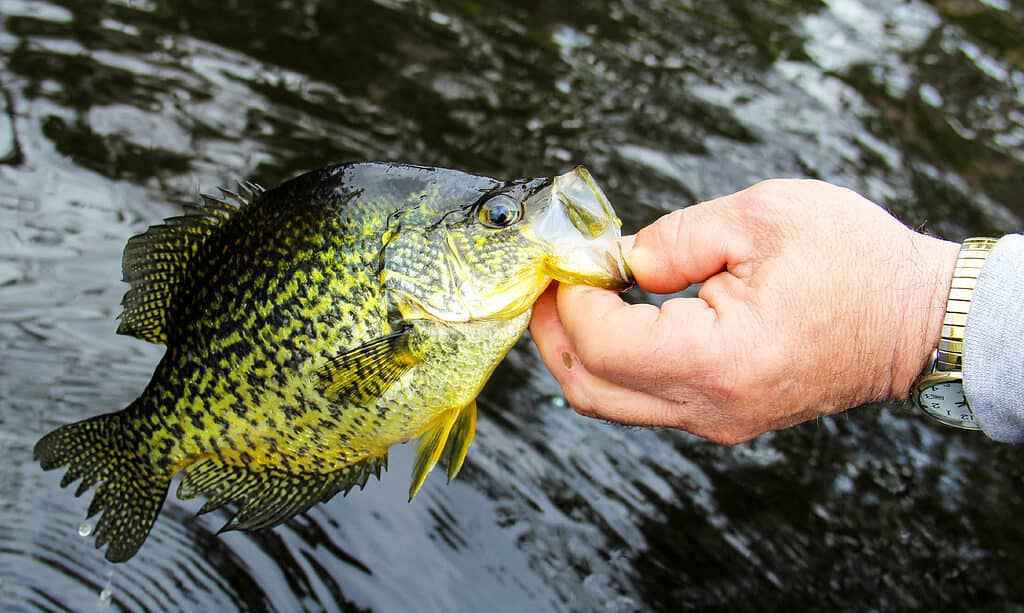
If you can’t afford the supplies needed to partake in fishing, there is a
Fishing Tackle Loaner Program
at Lake Wateree State Park.
©dcwcreations/Shutterstock.com
Plant Life You’ll See at Lake Wateree
While the littoral zone is virtually absent from Lake Wateree, there is still plenty of flora to see. There are slopes covered in pines and a variety of hardwood trees. There are also treeless meadows as well as ridges covered with loblolly pines.
Some of the longleaf pines in the area are over 100 years old. These trees used to be a common sight throughout the coastal plains of the south, but deforestation for farmland and the logging industry reduced the forest by 97 percent. Longleaf pines, along with shortleaf pines, are trees conservationists are hoping to reintroduce to the area.
Are There Alligators in Lake Wateree?
Every once in a while, an alligator is spotted in Lake Wateree or the Wateree River. However, they don’t make their homes in these locations. While they’re located in other parts of the state, sightings only happen once every few years around the lake.
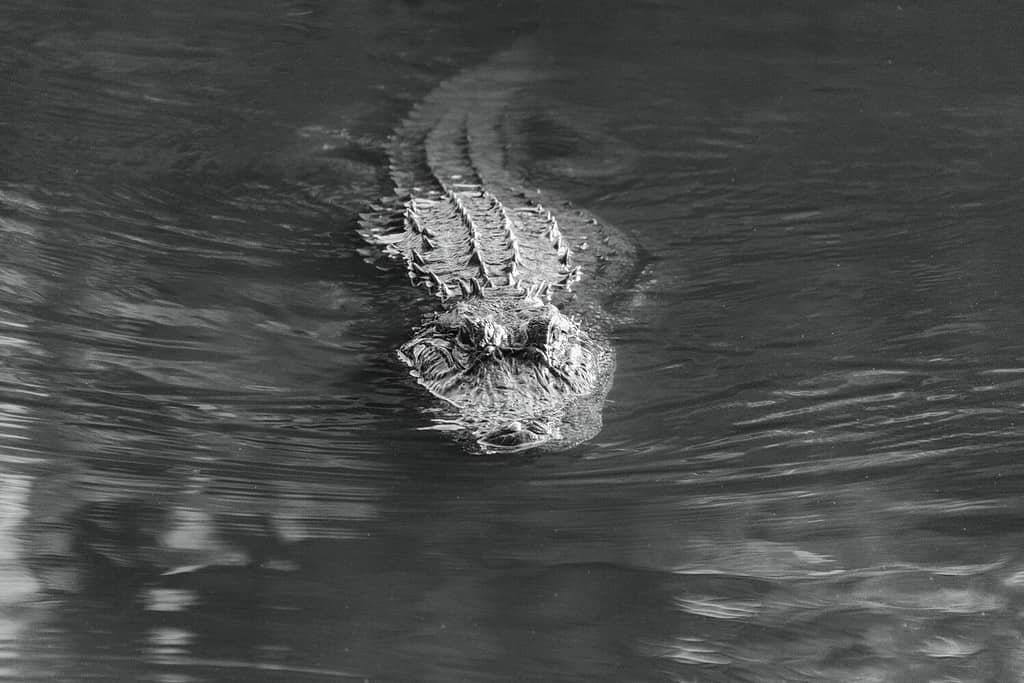
Every once in a while,
an alligator is spotted
in Lake Wateree or the Wateree River.
©Mix Tape/Shutterstock.com
Oldest Man-Made Lake: Do People Live on Lake Wateree?
Yes, people live on Lake Wateree. About two-thirds of the shoreline on the lake is developed while the other third remains uninhabited. Undeveloped property or old homes near the lake are sold for prices as low as 50,000 dollars, while large homes on the water are sometimes more than 2 million dollars.
Where is Lake Wateree Located on a Map?
Lake Wateree is found in Kershaw, Fairfield, and Lancaster counties, South Carolina. It is a 21-square-mile reservoir created by damming the Wateree River in 1919. As one of South Carolina’s earliest man-made lakes, it holds historical significance as a testament to the region’s efforts in harnessing natural resources for water management and recreation.
Here is Lake Wateree on a map:
Thank you for reading! Have some feedback for us? Contact the AZ Animals editorial team.

